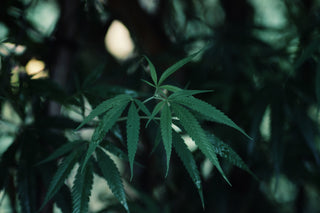When you first hear the word Cannabis or hemp, it's automatically associated with illegal drugs, or it's medicinal properties in recent times. Indeed one of the main questions we hear from customers is "Can I smoke it?" while holding a tea towel. You could try, but all it would do is give you a headache. There is a lot of confusion when trying to differentiate Hemp, Marijuana and Cannabis.
CONFUSION OVER CANNABIS
Cannabis is actually a ‘genus’ of a flowering plant. Traditionally called Cannabeceae in latin, it is the technical term we use for describing both hemp or marijuana, as a strain of the Cannabis family.Industrial hemp can be described as cannabis sativa. Marijuana is also referred to as cannabis sativa or cannabis indica depending on the purpose, or the region it’s grown in. Cannabis indica is another variation of the marijuana strain which originated in India, and is slightly different in appearance to cannabis sativa strains
HEMP VS MARIJUANA, WHAT’S THE DIFFERENCE?
The key differences between the two strains of cannabis, besides the visual aspects, is a psychoactive compound called THC (tetrahydrocannabinol). This is the compound responsible for getting you 'high' or intoxicated when you ingest it. Marijuana is generally grown with THC levels of between 5 and 25%. This compound is the reason behind marijuana being classified as an illegal and dangerous drug in Australia, and other regions around the world.Industrial hemp while also naturally grown only has trace amounts of THC of less than 1%. Hemp foods that are sold around the world have an allowable level of 0.3% THC which is basically undetectable. These trace amounts are also the reason getting approval for using industrial hemp as a food source proved difficult, despite these levels of THC being undetectable in a drug test, or having no mind altering effects.

In the 1920’s and 1930’s came several films like ‘Reefer Madness’ (1936), ‘Marihuana: Assassin of Youth’ (1935) and ‘Marihuana: The Devil’s Weed’ (1936) which were all propaganda films designed by these industrialists to create an enemy out of marijuana. Reefer Madness was possibly the most interesting of the films, as it depicted a man going crazy from smoking marijuana and then murdering his family with an axe. With these films, the goal was to gain public support so that anti-marijuana laws could be passed without objection.Unfortunately, hemp being a sustainable food, fibre and textiles source was lumped in the marijuana propaganda due to the trace amounts of THC, and direct threat to the thriving paper, steel and cotton industries.
HEMP FOODS NOW LEGAL
In April 2017, the Food Standards of Australia and New Zealand (FSANZ) finally recognised hemp as a sustainable nutritious food source, and a bill put forward to change hemp food laws within Australia and New Zealand was passed, allowing us to once again have access to this sustainable upper crop.
WHY EAT HEMP FOODS?
Hemp seeds are one of the most nutrient dense superfoods available on the planet today. They contain a full branched chain amino acid profile, the perfect ratio of Omega 3, 6 and 9 essential fatty acids, as well as a robust vitamin and mineral profile, with the likes of iron, zinc, magnesium, and potassium. Hemp seeds are one of the only plant based sources of naturally occurring vitamin D, and are phytate free meaning the phytonutrients are 100% bio available to the body.
HEMP AND OMEGA 6 GLA
GLA is a stand out nutrient found in hemp and hemp based foods. Besides its anti-inflammatory properties GLA can benefit many common health issues. Such as: ADHD, Breast pain, Diabetes and diabetic neuropathy, Heart disease, High blood pressure, Multiple sclerosis, Obesity, Premenstrual syndrome, Rheumatoid arthritis, Skin allergies
WHAT ARE HEMP FOODS?
Hemp foods are all derived from the whole hemp seed that grows from the stalk of the hemp plant. There are three main food groups that are derived from hemp seeds. Hemp seed oil is cold pressed from the hemp seeds, once the cold pressing takes place it leaves behind a ‘seed cake’ which is then milled into a fine powder, this powder is what we call hemp protein powder or hemp flour. Hemp seeds or hemp hearts are the soft nutty centre of the whole hemp seed which are extracted or “de-hulled” from the whole hemp seed.
HEMP FOODS ARE NOT TO BE FEARED
Despite what some have grown up to believe, cannabis in all forms is far from the devils weed. Technology and access to legitimate information on this truly magnificent crop as a food, medicine, and sustainable fibre source, has shown us how truly beneficial this plant can be. Whether it be for our own health or the health of the planet. Hemp is truly worth investing in for a healthy future.


